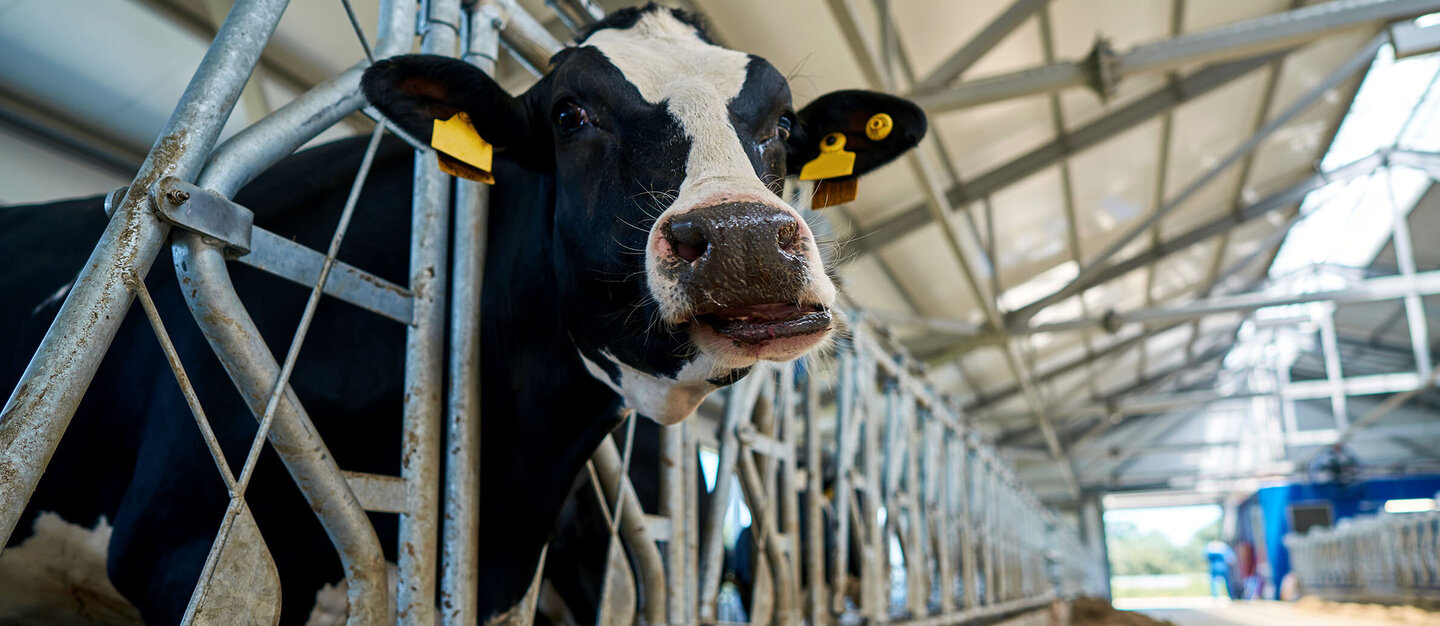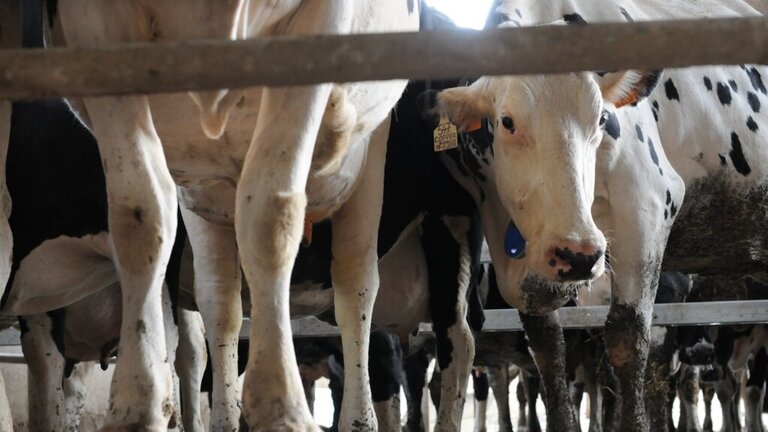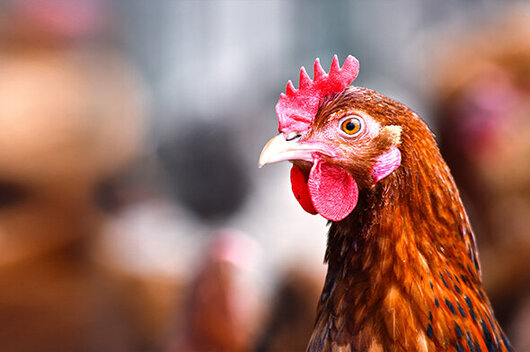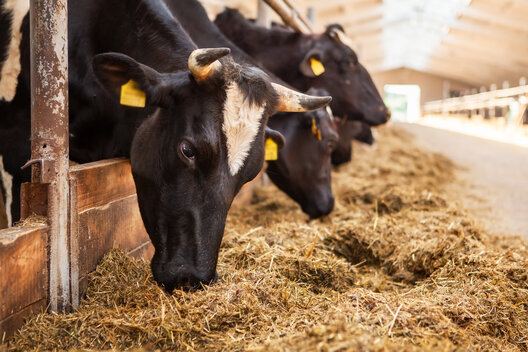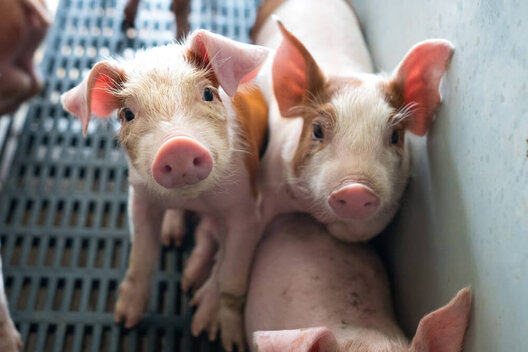Cattle in agricultureHow cattle are kept today
Cattle can live up to 20 years. In agriculture, fattening bulls end up in the slaughterhouse after just one and a half years and dairy cows after around five years. During their short lives, many animals have had to endure being tethered, with only a few being allowed out to pasture.
In total, more than ten million cattle are kept on farms in Germany.1Every year, over three million cattle die in Germany for meat and dairy products. The majority of animals suffer from catastrophic husbandry conditions: Concrete floors with crevices through which excrement and urine fall, no exercise and little to no access to pasture are their everyday reality.
Agricultural cattle farming inadequate
Naturally, cattle prefer to graze on pasture, chew their cud for hours, move around constantly and live in a herd with a fixed hierarchy. However, cattle can hardly live out this behavior in agriculture. Only a few still have access to pasture. The proportion is falling steadily: currently, only around 38 percent of animals can graze in the warm months or at certain times of the day. The remaining 62 percent are kept indoors all year round, and some of them at least have an outdoor run. Many cattle have to live on slatted floors in their stalls. The slats allow urine and manure to enter the manure cellar below. The surface is hard and slippery. The animals scrape their skin, injure themselves easily or fall ill on their claws and limbs. Around 500,000 cows are still kept in tethered stalls. Tethered with chains or rigid neck frames, they can neither scratch their backs nor turn, let alone walk.
Calves are victims of the dairy industry
Dairy cows have to give birth to a calf every year or so in order to keep producing milk . Calves are therefore a means to an end and a by-product of oversupply. The keeping of calves up to the age of six months is regulated by law. According to the regulations, calves in conventional farming only have to be kept on straw for the first two weeks of their lives. After that, they may be kept on a fully slatted floor without bedding. The young animals cannot rest comfortably on the hard surface. Group housing is only mandatory from the eighth week of life. However, it is still difficult for them to play and romp around together, as the floor is often slippery and the compartment is too small. Female calves face the same strenuous life as a dairy cow as their mother. After around five years, they are so exhausted that they are slaughtered.
The demand for male calves in Germany is not high enough to fatten and slaughter all the animals born here. For this reason, around 680,000 of them are sold abroad every year, including to the Netherlands, Italy, Spain, Belgium, France and Poland. Calves may be transported at the age of 14 days, but the conditions during transportation are inadequate. The calves are only fattened up for a few months and killed in the slaughterhouse a year and a half later.
Bulls suffer from intensive fattening
Around one million bulls are reared for the meat industry in Germany. The male calves destined for fattening in Germany are transported to a fattening farm when they are only a few weeks old. Calves from different farms of origin often come together there, which is stressful for the animals. In addition, their immune system is still weak and more susceptible to unknown germs. They are initially given the necessary milk replacer. Later on, the animals' feed consists mainly of high-energy maize silage and concentrated feed so that they gain a lot of weight in a short space of time. This feed hardly meets the needs of the cattle, as their digestive system is not designed for this as ruminants. In bull fattening, stall housing in confined spaces and slatted floors as well as tethering are particularly widespread. Many fattening bulls suffer from painful inflammation of the tip of the tail, as the tail is constantly lying on the damp surface of the slatted floor. For this reason, some farms still dock their tails, i.e. trim them. At the end of the fattening period, a bull weighs around 700 kilograms. He then often only has two to two and a half square meters at his disposal. Bulls are slaughtered at the age of around one and a half years.
This is what the German Animal Welfare Federation demands
- Grazing for all cattle during the growing season
- Exercise in an exercise yard during the winter months
- bright stables with an outdoor climate and wide, dry walkways
- dry, clean, littered and soft lying areas in the barn
- Ban on both year-round and seasonal tethering
- Ruminant-friendly feed
- Breeding for healthy, robust cattle

